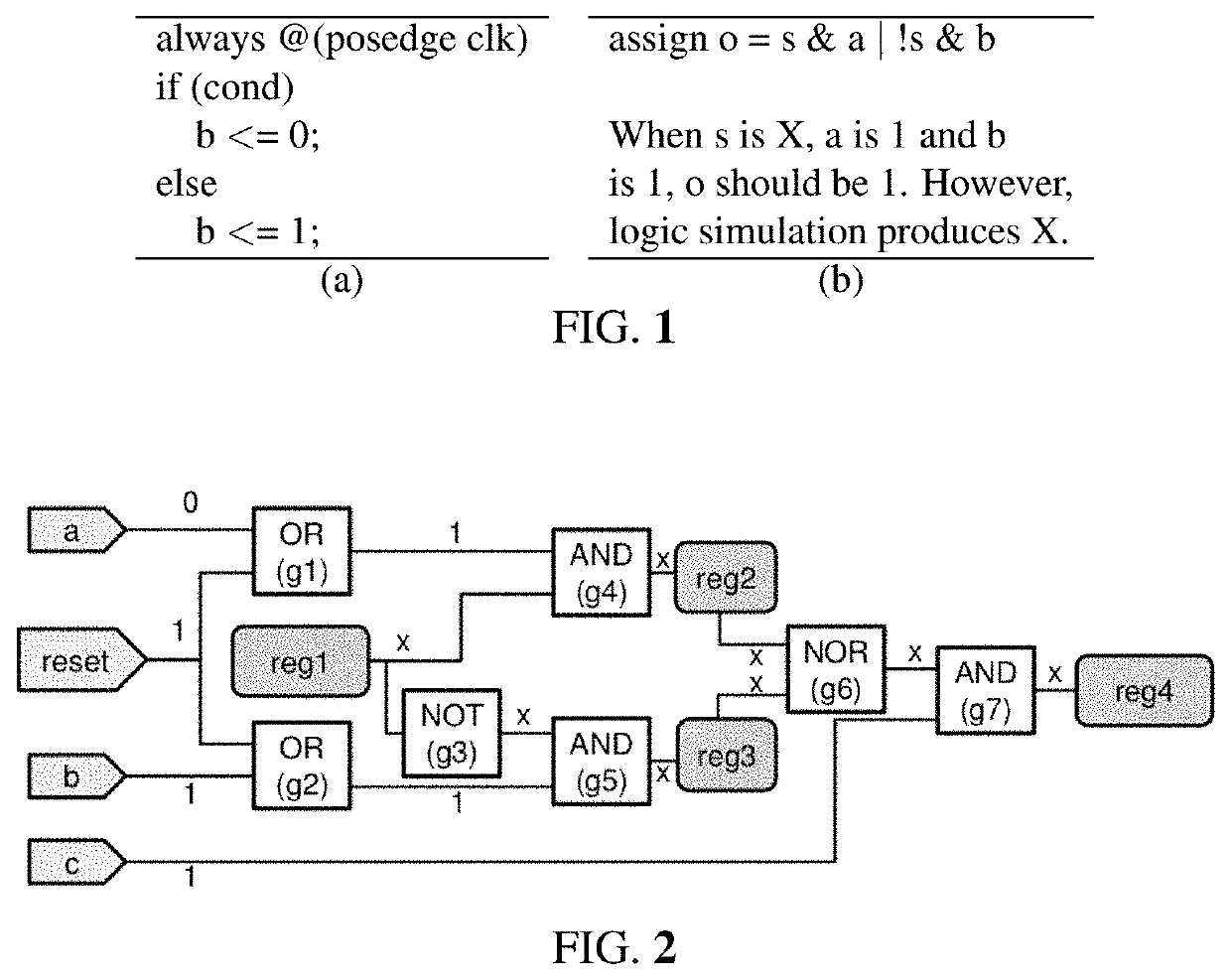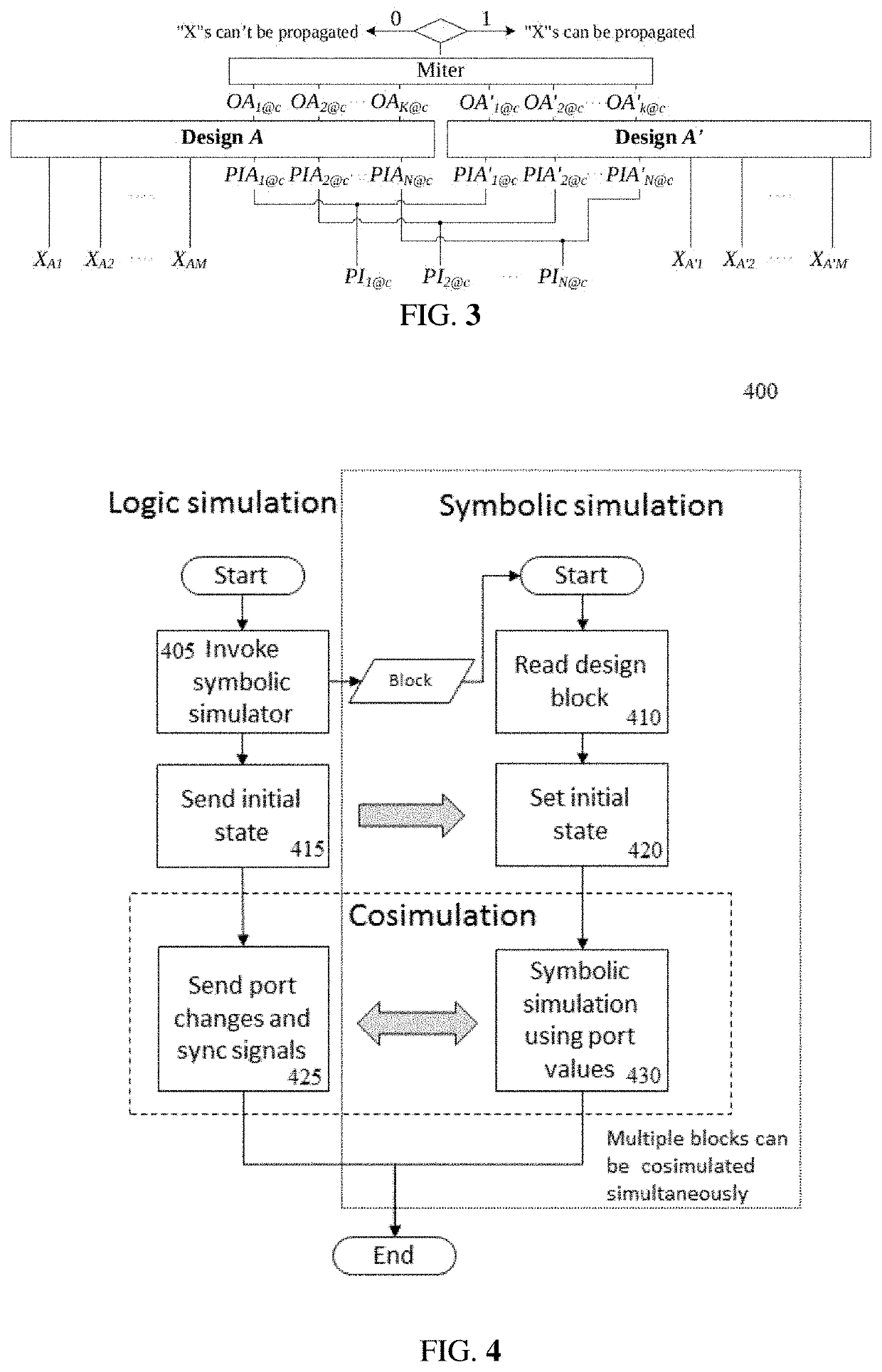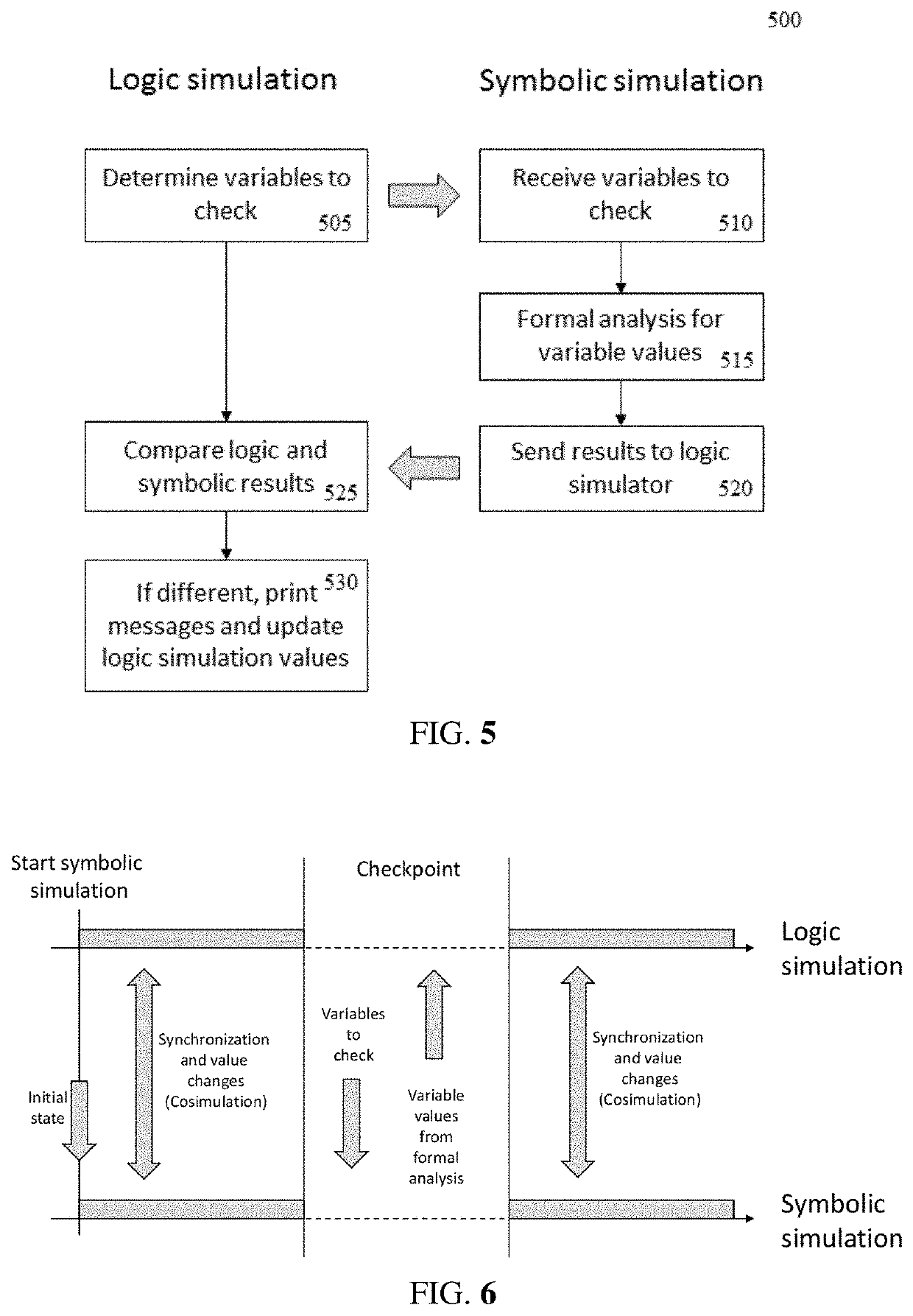System and method for accurate X handling using logic and symbolic cosimulation
a symbolic cosimulation and logic technology, applied in the field of logic simulation results correction techniques, can solve the problems of more uninitialized registers after reset, power-down blocks during normal operation can create unknown values in design registers, and non-deterministic states
- Summary
- Abstract
- Description
- Claims
- Application Information
AI Technical Summary
Benefits of technology
Problems solved by technology
Method used
Image
Examples
Embodiment Construction
[0042]The system and method described in the present application use logic and symbolic cosimulation to correct logic simulation inaccuracy when Xs exist. The steps to perform X analysis using cosimulation for a given block inside a design are as follows:
[0043](1) The logic simulator invokes a symbolic simulator at block 405. The symbolic simulator reads design code for the block at block 410 and prepares symbolic simulation.
[0044](2) The logic simulator sends current simulation state to the symbolic simulator as the initial state for symbolic simulation at block 415. The symbolic simulator sets its initial state for symbolic simulation accordingly at block 420.
[0045](3) The logic simulator and the symbolic simulator perform lock-stepped cosimulation. This is achieved by sending port value changes and next synchronization (event) time from the logic simulator to the symbolic simulator at block 425. The symbolic simulator performs symbolic simulation using port values from the logic ...
PUM
 Login to View More
Login to View More Abstract
Description
Claims
Application Information
 Login to View More
Login to View More - R&D
- Intellectual Property
- Life Sciences
- Materials
- Tech Scout
- Unparalleled Data Quality
- Higher Quality Content
- 60% Fewer Hallucinations
Browse by: Latest US Patents, China's latest patents, Technical Efficacy Thesaurus, Application Domain, Technology Topic, Popular Technical Reports.
© 2025 PatSnap. All rights reserved.Legal|Privacy policy|Modern Slavery Act Transparency Statement|Sitemap|About US| Contact US: help@patsnap.com



